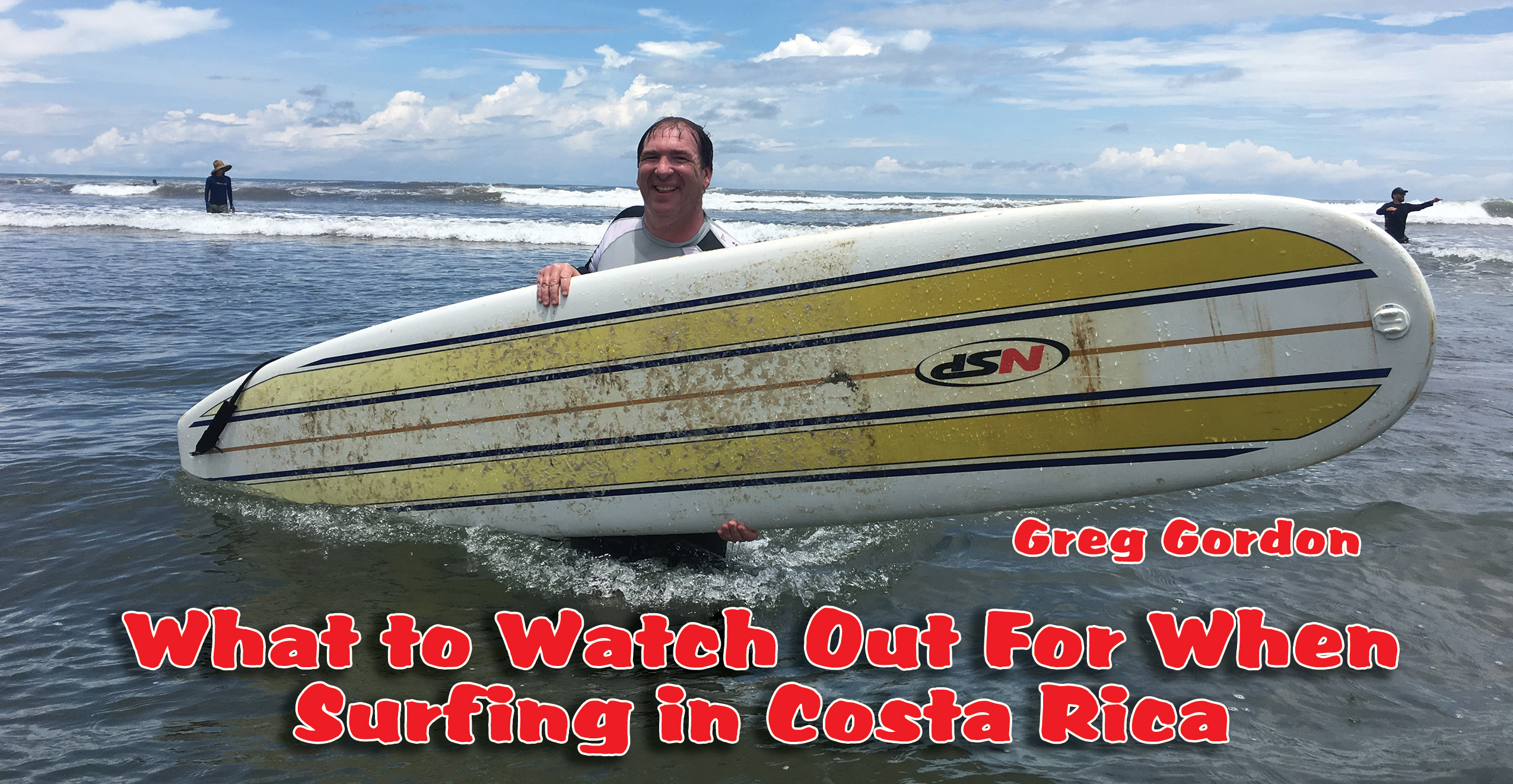What To Watch Out For When Surfing In Costa Rica
 When you watch surfers glide across the open face of a wave it appears like they are dancing and as it ends then gracefully hop off at the end and effortlessly paddle back out for another one. It can look so easy, but those that have tried surfing know it takes years of effort, patience, balance, and plenty of physical strength. If you are just starting out, don’t give up hope and meanwhile enjoy just the feeling of being out in the ocean away from the stress on land. Here are some things to watch out for to make that experience even more enjoyable.
When you watch surfers glide across the open face of a wave it appears like they are dancing and as it ends then gracefully hop off at the end and effortlessly paddle back out for another one. It can look so easy, but those that have tried surfing know it takes years of effort, patience, balance, and plenty of physical strength. If you are just starting out, don’t give up hope and meanwhile enjoy just the feeling of being out in the ocean away from the stress on land. Here are some things to watch out for to make that experience even more enjoyable.
The Sun
Costa Rica is smack dab in the middle of the tropics and so it stays hot all year. Even when it is cloudy the sun is powerful and you can get a sunburn within 15 minutes of being on the beach. The ocean surface reflects that sunshine and so even if you feel cool from the immersion in the water, your skin is still frying. Avoid a sunburn that will cost you days out of the surf by wearing a quality sports sunscreen, one with at least 30 spf. Those with zinc oxide cover your skin better and are better for the reef ecosystem, too. Wear a rashguard to protect you from the sun and also protect your chest from rashes caused by rubbing on the wax. Also, remember to stay hydrated since you are sweating out in the water, but it doesn’t feel like it since the ocean washes it away.
Rip Currents
Both the Pacific and Caribbean coasts can have strong rip currents. A rip current takes place where deep water is funneled between two areas of shallow water. As the water drains back out to sea there is a visible discoloration of the ocean surface. An experienced surfer knows to use the current to get back out to the outside lineup without using as much energy. A new surfer may not want to get to the outside as that is where the bigger waves are so they don’t want to be caught in one since they use up a lot of energy to escape it. The key is to not paddle against it, but instead paddle parallel to the shore line. If you are on a beach with lifeguards, ask them where the rip currents are and stay in front of where the lifeguards are posted.
Hazards
A lot of beaches in Costa Rica are made up of dark volcanic sand, so it may be difficult to see what is below the surface. If you are surfing an area for the first time, ask a local surfer if there are any rocks or reef to be aware of so that you don’t smack your foot into them while walking out into the lineup. When walking out in the sand, shuffle your feet so you do not accidentally step on a stingray. If walking over a rock or reef shelf in shallow water look out for sea urchins. And once you are in the water, keep an eye out for stinging jellyfish, migrating crocodiles, or a shark’s dorsal fin. It is rare you will see one, but it is important to stay vigilant. If there has been a heavy rain, sometimes large tree limbs and trunks will float out in the lineup so be careful when duck diving as well.
Your Surfboard
If you are renting a board, you want to check that it is in good condition in order to avoid injuries. First check for dings and cracks since any fiberglass jutting out can cut you and if water gets inside your board it will get heavier and eventually be unrideable. You want to check the fins to see they are not cracked or loosely connected to the board. And check that the leash is not frayed or tied in any knots, which could make it snap more easily. Make sure the leash is secured well to the board as that nylon string may also be frayed or dry rotted. Finally, put a good coat of wax on your board so you will not slip off of it as easily.
Other Surfers
If you are a beginner surfer, besides learning to catch and ride waves you need to learn surfing etiquette. The first is that the surfer closest to the peak of the breaking wave has priority of catching it. Second is that when a surfer is coming towards you riding a wave, you need to paddle towards where the wave is already breaking, not out towards the shoulder as that is the direction the surfer is planning to go. (There are a few exceptions to this rule, but the gist is to not get in the rider’s way). Third is to not let go of the board if there are surfers behind you closer to shore. You should learn to turtle roll your board to avoid it being pulled away from you. Not all surfers follow these rules, but the majority do and you should as well if you want to gain respect out in the lineup. If other surfers see you being respectful they may also share more waves with you.
With these tips you will have a much better time out in the surf. It may take time and practice to be able to catch and ride waves consistently, but meanwhile keep this thought in the back of your head – “The best surfer is the one having the most fun.” Pura vida!

